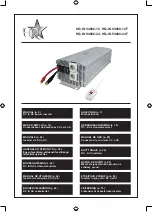LRR = sin(-cs) = sric(-cs)
To complete LRL and LRR over the range of cs = 0 to -22.5 we must add a gain
reduction for the "TV MATRX" mode. Once again in the "TV matrix" mode we desire
3dB less output when steering is neutral, but rising to full value when the steering is more
than 22.5 degrees to the rear. Performance is improved by making this reduction sensitive
to the sum of |lr| and |cs|. This is achieved in the current design by reducing both the RRR
and RRL elements by 3dB when the sum of lr and cs is zero, and raising them back to
their original values as the sum goes to 22.5 degrees. Once again the slope of this gain
change is relatively arbitrary, as long as both RRR and RRL are altered in the same way.
We will call the correction for TV Matrix tvcorr(|lr|+|cs|). Tvcorr(|lr|+|cs|) is -3dB at zero,
and 1 when the argument is 22.5 degrees and higher.
LRL = cos(-cs)*tvcorr(|lr|+|cs|) = sri(-cs)*tvcorr(|lr|+|cs|)
LRR = sin(-cs)*tvcorr(|lr|+|cs|) = sric(-cs)*tvcorr(|lr|+|cs|)
Notice we have defined a new function sric(x), which is equal to sin(x) over the range of
0 to 22.5 degrees, and sri(x), which is equal to cos(x). We will use these functions again
in defining the Left Rear matrix elements during Left steering.
Left side/rear outputs during rear steering from Right Rear to Rear
Now consider the same matrix elements as cs becomes greater than -22.5 degrees. As we
said in the AES paper and the two patent applications, LRL should rise to one or more
over this range, and LRR should decrease to zero. Simple functions fulfill this:
(remember cs is negative)
LRL = (cos(45+cs) + rboost(-cs)) = (sri(-cs) + rboost(-cs))
LRR = sin(45+cs) = sric(-cs)
The Left Rear matrix elements during right steering are now complete.
The Left Rear elements during steering from left to left rear
The behavior of the Left Rear Left and Left Rear Right elements is much more complex.
The Left Rear Left element must quickly rise from zero to near maximum as lr decreases
from 45 to 22.5 or to zero. The matrix elements given in the AES paper perform this, but
as we showed earlier, there are problems with continuity at the cs = 0 boundary.
For the March 1997 release a solution was found which uses functions of one variable
and several conditionals. In the AES paper and the problem at the cs = 0 boundary arises
because on the forward side of the boundary the LRL matrix element is given by GS(lr).


















